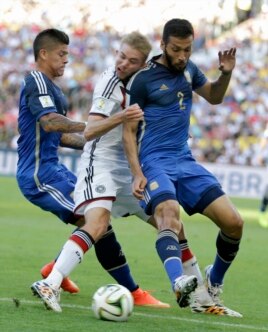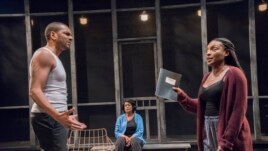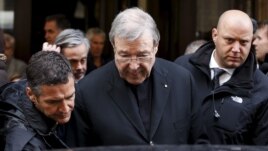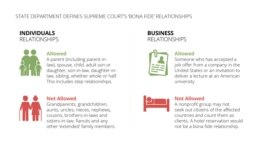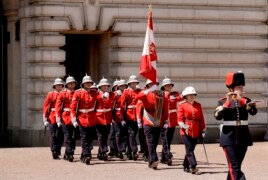30 June, 2017
It is pow wow season in the United States. That is a time when Native American groups gather to connect, celebrate tribal cultures, and express their patriotism.
On any weekend this summer, a pow wow is taking place somewhere in the country. The term "pow wow" comes from the Algonquian language. It meant a gathering of spiritual healers celebrating successful hunts, battles or trade.
A pow wow is an expression of unity within and among Native communities. In 1883, the government banned "old heathenish dances." Officials said they were trying to prevent an inciting of what they called "warlike passions" of tribal youth.
However, tribes continued to carry out the activity, and the ban was ended in the 1930s.
The drums
The Confederated Salish and Kootenai Tribes of northwest Montana held pow wows as Fourth of July celebrations. Other tribes held pow wows as cultural displays for non-Natives.
Becky Olvera Schultz is an artist and writer of Azteca and Kickapoo ancestry. She said all pow wows center around dance, and central to dance is the drum.
"The drum is the heartbeat of the pow wow," she said. "Drum refers to both a large instrument and the group of drummers and singers who provide the pulse for pow wow dances."
The drums make music of many kinds, from war songs to religious. Many are sung in "vocables," non-word sounds that can be understood and shared among tribes.
Drums may include members of different tribes. Some well-known groups are in high demand and travel from one event to another to perform.
Honoring the warrior
All pow wows open with the Grand Entry into the dance arena. "The veterans head the Grand Entry, carrying flags and eagle staffs," Schultz said.
Covered in animal skin and eagle feathers, the staff is a sacred symbol of its tribe or nation. Dignitaries, chiefs, princesses, elders and pow wow organizers follow the veterans during the Grand Entry.
"Then come the male dancers, in different categories and age groups, and then the women dancers in theirs," explained Schultz. When all are in place, a song is sung to honor the veterans and a prayer is said to open the dancing.
A presenter leads the activities, announcing events and introducing dancers.
"Competition pow wows, which are usually larger, have a purse, prize money, and some of them are quite large," Shultz said. "A lot of the dancers will go from pow wow to pow wow, and some of them win a good amount of money," she added.
Grass dance, fancy shawl dance and more
Men, women and children dance in several categories, which have developed as a mix of traditions from different tribal nations. The men's Fancy Dance, for example, is a colorful and energetic dance in which men wear feathered bustles.
Men in the Grass Dance, on the other hand, wear long strips of material that represent the movement of windblown prairie grass.
The Fancy Shawl Dance has women wearing shawls over their shoulders. The dancers' shawls are large, colorful and have many strips of material, called fringe, hanging along the edge.

This photo shows Fancy Shawl dancers performing at a pow wow in San Jose, Cal., date unknown.
"They swing around and hold their shawls out," Schultz said about the dancers. "The purpose is to make the fringe sway back and forth. It's very pretty and fluid," she said.
A dance for healing
Californian Alorha Baga is a member of the Rosebud Lakota tribe and a competitive jingle dancer. She said jingle dancing began in the early 20th century as a healing dance among the Northern Ojibwe, or Chippewa tribe.
She said, "An elder was trying to figure out a way to cure an ailing woman named Maggie White. He was gifted a vision, and in that vision, he was told exactly what to do."
At first, Baga explained, Maggie was too sick to move. But as tribal women danced, Maggie began getting better.
"And by the time they were finished, she was cured," Baga said.
The jingle dress includes beadwork and the rolled covers of metal tobacco containers. The metal rolls hang from strips of cloth attached to the dress, producing the jingle sound.
Today, Baga not only performs at pow wows but teaches the dances to children.
"Part of our teaching of pow wow dancing is making sure that our children and even adults know how these dances came to our tribes, their origins and their histories," she said.
Pow wows may take place over two or three days, attracting large crowds and generating substantial income.
"I don't dance at pow wows, but I attended all my life and I am 60 years old now," said a Rosebud Lakota tribe grandmother.
"We have the Rosebud Fair every year here on the reservation," she said, "and everybody attends either for pow wow, the rodeo, mud racing or bread-making contests."
And, she added, the food.
I'm Dorothy Gundy. And I'm Caty Weaver.
VOA reporter Cecily Hilleary wrote this story. Caty Weaver adapted it for Learning English. Kelly Jean Kelly was the editor.
____
Words in This Story
heathenish – adj. non-Christian; or non-religious
pulse – n. a strong, regular beat or pattern of sounds in music — usually singular
sacred – adj. worthy of religious worship: very holy
elder – n. a person who has authority because of age and experience
category – n. a group of people or things that are similar in some way
bustle – n. a frame or pad worn in the past under a skirt or dress to hold it out from the body in the back
swing – v. to move backward and forward or from side to side while hanging from something
ail – to suffer bad health
rodeo – n. an event in which people compete at riding horses and bulls, catching animals with ropes, etc.
contest – n. an event in which people try to win by doing something better than others







